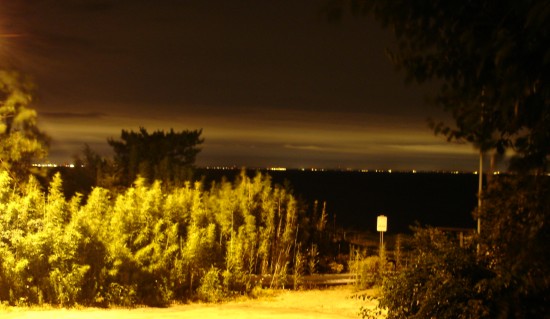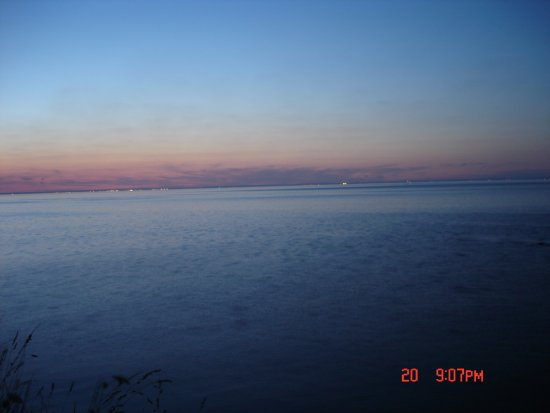In the August 4 Guardian, the writer
Hanif Kureishi weighs in on what British multiculturalism might mean in light of the atmosphere of extreme intolerance that prevails at some of the London Mosques. (Via
Locana)
Kureishi's name has been
in the air a bit since it was revealed that the men behind the 7/7 bombings in London were second-generation Brit-Asians. The spread of an ultra-fundamentalist ethos amongst second-generation British Muslims was something Kureishi explored in his screenplay to
My Son the Fanatic (which began as a short story in
The New Yorker) as well as in
The Black Album, a novel responding to the turmoil in the British Muslim community following the
Rushdie affair.
But the interesting part of this essay isn't really its central point about the poison of religious extremism –- which I think any moderate or progressive person would probably agree with. What is more intriguing is actually Kureishi's unusual use of the word 'multiculturalism' in the context of British 'faith schools'. There's a lot of confusion about what these schools are and how they work (especially for us non-Brits), and in this post I'll explore them a little.
Here's Kureishi:
If the idea of multiculturalism makes some people vertiginous, monoculturalism -- of whatever sort -- is much worse. Political and social systems have to define themselves in terms of what they exclude, and conservative Islam is leaving out a lot. . . .
You can't ask people to give up their religion; that would be absurd. Religions may be illusions, but these are important and profound illusions. And they will modify as they come into contact with other ideas. This is what an effective multiculturalism is: not a superficial exchange of festivals and food, but a robust and committed exchange of ideas -- a conflict that is worth enduring, rather than a war.
When it comes to teaching the young, we have the human duty to inform them that there is more than one book in the world, and more than one voice, and that if they wish to have their voices heard by others, everyone else is entitled to the same thing. These children deserve better than an education that comes from liberal guilt. (link)
The rhetoric of multiculturalism that has supported to the establishment of a number of state-funded Muslim schools in England in recent years, with plans for more to be built –- with the blessings of the Blair government.
But for Kureishi, the people who need to come to terms with multiculturalism aren't mainstream Britons, but radicalized and culturally isolated British Muslims. Kureishi is therefore opposed to these schools, which he sees as 'monocultural' rather than multicultural, and if anything, part of the problem:
It is not only in the mosques but also in so-called "faith" schools that such ideas are propagated. The Blair government, while attempting to rid us of radical clerics, has pledged to set up more of these schools, as though a "moderate" closed system is completely different to an "extreme" one. This might suit Blair and Bush. A benighted, ignorant enemy, incapable of independent thought, and terrified of criticism, is easily patronised. (link)
For Kureishi, there is no difference between radical clerics in the East London mosques and the state-sponsored Religious Education that is universally taught in the English school system. Most Americans, used to the strong separation of church and state that has been in effect in American public education since 1948 (i.e., when prayer in school was banned;
McCollum v. Board of Education), will probably see what Kureishi is saying as essentially common sense.
But it's a more complex story than that. Britain has never been a place where strong separation of church and state has been practiced. The Anglican Church is still technically established (in England at least -– not in Wales or Scotland), and enjoys certain privileges by virtue of its special status in English life. Did you know that the English monarch is not permitted to marry a Catholic? And that the Archbishops of Canterbury and York have reserved seats for them in the House of Lords? Most of these are merely symbolic, token privileges, remnants from an era in which the Church of England was one of the driving political powers in English life. But they would be unthinkable in the U.S., India, or France.
Also, the Anglican Church is by law an 'open church', which means that people who ordinarily never go to Church services are still permitted to use local parish Churches for baptisms, marriages, and funerals. Thus, while active membership in the Anglican Church dropped to 11 percent of the English population by the 1990s (according to Monsma and Soper's
The Challenge of Pluralism, which is my primary source for much of the background information in this post), 55 percent of England is still baptized into the Church, and 60 percent casually identify as Anglicans. ("Social Anglicans," one could say)
Most importantly of all, Britain (here including Scotland and Wales) has a long tradition of
directly funding religious education in schools. Though this tradition of Anglican schooling goes back to the early 19th century, it took significant steps forward in 1870, when the British government first began building primary schools, and then again in 1944, when the modern system of Local Educational Authorities (LEAs) was put into place.
Since then, the
“faith schools” Kureishi is referring to in this opinion piece have in fact become quite widespread: 35 percent of British primary and 16 percent of secondary schools fall into this category. Because their students significantly outperform students at non-religious schools, many faith schools are quite selective in their admissions process. Historically the schools were either Anglican or Catholic, with very small numbers of schools given over to other denominations (Presbytarians, Methodists, etc.), as well as a handful to Jews. However, it's important to note that most Christian faith schools do admit students from other faiths without any 'religious tests' (for instance, frequent Sepia Mutiny commentor
'Bong Breaker' –- a Bengali Hindu -– went to one of the more prestigious Anglican schools, and clearly benefited from the experience).
[Some of these schools do not admit non-Christians. There was a
controversy in Manchester about this not too long ago.]
The Anglican Church has been quite explicit about their
reasoning for this policy of inclusion -– with endlessly declining attendance in England, they are in desperate need of new members, and they see the inclusion of non-Christians in Anglican state schools as a potential source of new converts (see the extracts from the 'Dealer Report'
here). This policy of inclusion is also a good one from the civil rights perspective, as it lessens the perception of discrimination amongst England's minorities. Anyone can go to one of these schools if they can get in, and I imagine for Hindu or Muslim parents the danger of their kid converting to Christianity is probably mitigated by the significant educational advantages that this kind of education offers.
Until quite recently, no Muslim schools were able to match the strict criteria necessary to receive state support. Now a
few have appeared and more are in the offing, which
raises two serious questions to consider. One is, will the Islamic state schools be places where moderate, multiculturalism-friendly Islam is inculcated? The second is, will the principle of the government's 'supportive neutrality' to the different faiths be challenged once more 'foreign' faiths enter the picture? In short, can the British public handle state support for Muslim schools?
With the first question -–
do the Islamic schools work? -- I don't have much information, except to say that it appears so. Indeed, because of the strong degree of state control and oversight that is associated with state support, the Labour government has been keen to support these schools wherever possible (see
this interview). It appears to be a way for them to 'reach out' to the Muslim community (or more cynically, to appease it), while also gaining leverage against the informal and sometimes dangerous 'education' offered at some Mosques. In essence, if you can't stop the kids from getting religionized, maybe you can control the kind of religion they are exposed to.
A fair criticism of the Islamic faith schools (and a reason why they are in fact potentially a bad idea) is that most Muslims in England are immigrants, unlike the members of majority faiths. Though advocates for the Islamic state schools promise they will be centers for a moderate kind of Islam, the schools might not be helpful to immigrants or the children of immigrants who aspire to learn the ropes of British society. In short, the Islamic state schools run the exact significant risk Kureishi identifies -- 'monoculturalism' rather than multiculturalism.
But the Islamic schools have in fact been controversial for other reasons than this, particularly to English conservatives. A number of Church officials as well as people associated with existing (Christian) faith schools like
David Bell have spoken out against them, along fairly predictable lines. This way of thinking -– support for state religious schools,
except Muslim schools -– seems openly discriminatory and, in David Bell's case, hypocritical.
One interesting twist on this issue – and a way to potentially resolve the integration/religious freedom dilemma inherent whenever we think about multiculturalism in the realm of religion –- is the
proposal for 'multi-faith' schools, which are 'faith schools' that are actually split between four religious communities. The students in such schools are fully integrated, and are given a fair amount of religious education in common, with some separation for specific/advanced instruction.
Another new occurrence is the proposal to start a
Hindu state school in northwest London in 2008, which has recently been approved. Once the state school system becomes more complex than simply Christians/Jews vs. Muslims, the parameters of the debate over religious education in England will change yet again. (There are also
apparently two Sikh state schools in the UK; I don't know if there are any plans for Jain, or Buddhist state schools.)
* * * *
Some closing thoughts. Though Liberal Democrats and others on the British left would love to see an end to state support for religious schools, it's not likely to happen as long as the schools continue to be popular -- and outperform non-religious government schools. (The Left would also like to see the abolition of the Monarchy, which seems to be about as popular in Britain as
Diego Maradona)
The U.S. model of strict separation ensures that the public school classroom cannot be used as a site where extremist religious views are propagated. The simplest and most radical solution to the multiculturalism question in the UK would be to simply dismantle the faith school system entirely, and follow the U.S. Model.
[Similarly, the simplest and most radical solution to the 'Personal Law' conundrum in India would be to establish a Uniform Civil Code with a completely secularized and woman's-rights oriented approach to marriage, divorce, property rights, inheritance, and childhood custodial rights.]
But the American model isn't for everybody, and state support for religion is a fact of life in Britain, and not likely to go anywhere. As long as it exists, fairness dictates that new religious minorities –- Hindus, Muslims, etc. -– should have the right to try and participate in the faith schooling system. It is the task of the British government to try and ensure that such endeavors as Islamic faith schools work to the advantage of the cause of tolerance, integration, and cross-cultural understanding, and benefit British society on the whole.
Moreover, as we're seeing with the corrosion of the secular school system (a corrosion that
George Bush himself is promoting, with his support for Intelligent Design), even the vaunted American system is itself in some jeopardy.
[Other links:
--
Saheli's response to the Kureishi piece
--
Locana's follow-up post, taking it back to the Indian system
--A recent
Crooked Timber post on the British religion/education issue.]
[Cross-posted at
Sepia Mutiny]
 There's a
There's a 

 [Cross posted at
[Cross posted at 
